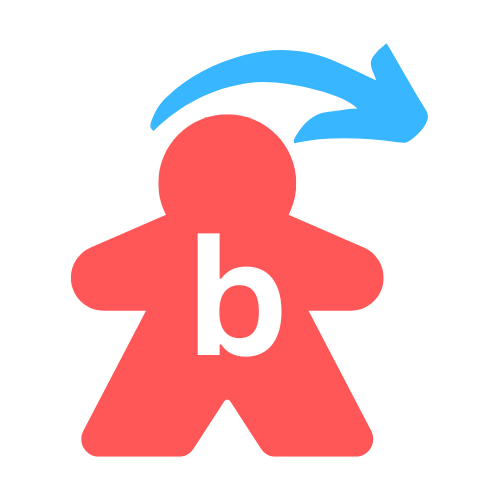
Key Project Management Tools vs. Experiential Learning Tools
Share
Project management has always relied on tools. From Gantt charts and spreadsheets to collaboration platforms like Asana, Jira, or Trello, tools are what keep projects structured and measurable.
But as powerful as these systems are, they only tell part of the story. They help manage tasks — not necessarily people, decisions, or leadership growth.
That’s where experiential learning tools come in. Unlike digital project management platforms, experiential tools focus on developing the mindset, behaviors, and critical thinking skills that project managers need to excel in complex, uncertain environments.
This article explores how both types of tools complement one another — and why organizations that combine them achieve the best results.
What Are Project Management Tools?
Project management tools are designed to plan, execute, and monitor projects. They ensure that timelines, budgets, and deliverables stay on track.
Popular tools include:
- Microsoft Project – for scheduling and resource allocation
- Asana and Trello – for task tracking and team collaboration
- Jira – for Agile and software development projects
- Monday.com – for workflow visualization and reporting
These platforms are invaluable for structure, visibility, and coordination. They keep projects organized and help teams stay aligned on deadlines and deliverables.
The Limitation of Traditional Tools
While these tools streamline processes, they don’t necessarily build leadership, judgment, or soft skills — the very qualities that differentiate great project managers from average ones.
For example:
- A dashboard can show that a project is delayed, but it can’t help a manager navigate team conflict.
- A risk log can identify potential issues, but it doesn’t teach how to handle a high-pressure client call when things go wrong.
- A chart can visualize dependencies, but it doesn’t guide decision-making when priorities suddenly shift.
In other words, project management tools organize the work, but they don’t develop the person managing the work.
What Are Experiential Learning Tools?
Experiential learning tools focus on learning by doing. Instead of telling managers what to do, they place them in simulated or gamified situations where they must apply judgment, make decisions, and experience consequences in real time.
These tools include:
- Simulations: Interactive exercises where participants manage virtual projects or scenarios.
- Board games: Physical or digital games that replicate project environments (like Project Supremo).
- Roleplays and workshops: Facilitated sessions that mimic real project challenges.
The goal isn’t to teach steps — it’s to build intuition, adaptability, and leadership through experience.
How Experiential Tools Build Real-World Skills
1. Decision-Making Under Pressure
In a simulation or board game, project managers must make quick decisions about priorities, risks, and resources. Each choice has a visible consequence. This mirrors the unpredictability of real-world projects, helping managers learn how to think under pressure.
2. Communication and Collaboration
Many experiential tools require teamwork. Participants must coordinate actions, negotiate trade-offs, and resolve conflicts. These interactions sharpen the interpersonal skills that software alone can’t teach.
3. Risk and Change Management
When a game introduces unexpected events — like scope changes or budget cuts — participants must respond strategically. This teaches flexibility, resilience, and creative problem-solving.
4. Reflection and Self-Awareness
Experiential learning emphasizes reflection. After completing a simulation, participants review what worked, what failed, and how they reacted. This builds self-awareness and continuous improvement habits.
Project Management Tools vs. Experiential Learning Tools
| Aspect | Project Management Tools | Experiential Learning Tools |
|---|---|---|
| Purpose | Manage and monitor projects | Develop leadership and critical thinking |
| Focus | Tasks, timelines, deliverables | Decisions, behavior, and adaptability |
| Learning Style | Technical and procedural | Experiential and reflective |
| Engagement Level | Informative but passive | Interactive and immersive |
| Outcomes | Improved process efficiency | Stronger leadership and decision-making |
| Examples | Asana, Jira, MS Project | Project Supremo, simulations, workshops |
The best project managers use both: digital tools for control and experiential tools for growth.
The Power of Combining Both Approaches
Better Decision-Making
When experiential training is integrated with project tools, managers not only know how to use software but also why certain choices matter. They develop the judgment to interpret data and act decisively.
Stronger Teams
Project management tools make collaboration easier, but experiential learning improves the quality of that collaboration. Managers who have practiced team-based problem-solving are better at leading real teams through challenges.
Measurable Improvement
Experiential learning can produce metrics too. By tracking performance in simulations — such as how often teams stayed within budget or met deadlines — organizations can identify skill gaps and improve both training and tool adoption.
Real-World Example
A consulting firm introduced a gamified training program to complement its digital project management system. Managers participated in a simulation where they had to complete a mock project using resource tokens, task cards, and unexpected “event” challenges.
After each session, they reflected on how they made trade-offs, communicated with stakeholders, and handled stress. The results were clear:
- 30% improvement in team collaboration scores
- 25% reduction in project delays over the next quarter
- Higher confidence in handling uncertainty and conflict
The company found that combining project management software for structure with experiential tools for human performance created a far more effective leadership pipeline.
Why Experiential Learning Is the Future of Project Training
As automation continues to handle the technical side of project management, human skills — leadership, judgment, and emotional intelligence — will define the next generation of successful managers.
Experiential learning tools develop these skills faster because they immerse learners in real decision-making contexts. Rather than memorizing frameworks, participants practice applying them — and that’s what makes learning stick.
Final Thoughts
Project management tools are essential for running efficient, well-structured projects. But to lead with impact, project managers also need experiential tools that strengthen their leadership, decision-making, and people management skills.
The future belongs to managers who can combine the best of both worlds — technology and human insight.
👉 Ready to experience the difference? Discover Project Supremo — a gamified learning tool that turns project management concepts into hands-on leadership practice.
